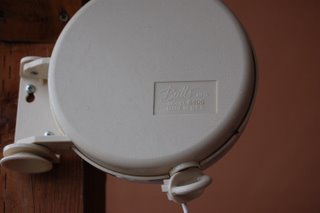In a post I wrote about tips for buying at big-box stores, I mentioned the unit price of bottled water makes it a good buy. I got a comment questioning the merits of bottled water. While we drink mostly tap water, we do keep a case of bottled water on hand (spring water). Depending upon your water source and the treatment it requires to bring it up to standards, a filter is another option over bottled water.
There are some instances when quality bottled water is more than a convenience (make sure the water is good quality). For example:
1. Pregnant or nursing women and young children: When I lived in SW Oklahoma and was pregnant with my son, my doctor advised me to drink only distilled water rather than the highly chlorinated water that came from the reservoir. Standards for tap water are set for healthy adults, not small children.
2. Cancer patients or anyone with a compromised immune system: Again, tap water standards are set for healthy adults, not for anyone with a compromised immune system.
3. Emergency Supplies. In case of an earthquake (we live on the Pacific Rim), the tap probably won't be working. We have several gallon jugs filled with tap water and a case of bottled water as part of our emergency supplies.
4. Traveling. When traveling, I prefer to take my own bottle of water at .23 cents, rather than pay $1.50+ at airport or hotel shops. Depending upon the quality of water at my destination, I may opt for bottled water rather than the local tap water.
Know your bottled water and what you're really buying, if you have the need. Here are some definitions from
Bottledwater.org:
What are the different types of bottled water?
FDA has established a bottled water Standard of Identity to define the several different types of bottled water based on specific characteristics of the product. Bottled water products meeting the Standard of Identity may be labeled as bottled water or drinking water, or one or more of the following terms:
Spring Water - Bottled water derived from an underground formation from which water flows naturally to the surface of the earth. Spring water must be collected only at the spring or through a borehole tapping the underground formation feeding the spring. Spring water collected with the use of an external force must be from the same underground stratum as the spring and must have all the physical properties before treatment, and be of the same composition and quality as the water that flows naturally to the surface of the earth.
Purified Water - Water that has been produced by distillation, deionization, reverse osmosis or other suitable processes while meeting the definition of purified water in the United States Pharmacopoeia may be labeled as purified bottled water. Other suitable product names for bottled water treated by one of the above processes may include "distilled water" if it is produced by distillation, deionized water" if it is produced by deionization or "reverse osmosis water" if the process used is reverse osmosis. Alternatively, "___ drinking water" can be used with the blank being filled in with one of the terms defined in this paragraph (e.g., "purified drinking water" or "distilled drinking water").
Mineral Water - Bottled water containing not less than 250 parts per million total dissolved solids may be labeled as mineral water. Mineral water is distinguished from other types of bottled water by its constant level and relative proportions of mineral and trace elements at the point of emergence from the source. No minerals can be added to this product.
Sparkling Bottled Water - Water that after treatment, and possible replacement with carbon dioxide, contains the same amount of carbon dioxide that it had as it emerged from the source. Sparkling bottled waters may be labeled as "sparkling drinking water," "sparkling mineral water," "sparkling spring water," etc.
Artesian Water/Artesian Well Water - Bottled water from a well that taps a confined aquifer (a water-bearing underground layer of rock or sand) in which the water level stands at some height above the top of the aquifer.
Well Water - Bottled water from a hole bored, drilled or otherwise constructed in the ground, which taps the water aquifer.











